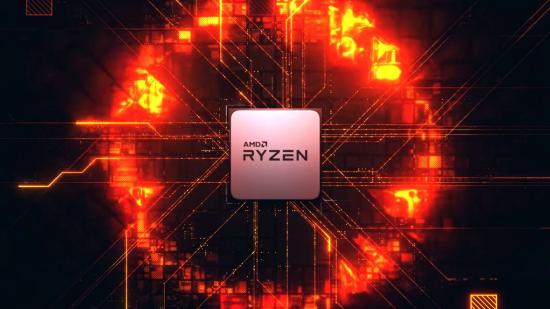AMD’s Ryzen 4000-series APUs should be hitting the market soon (first as OEM-only, but as DIY PC builder processors soon after). A few days ago we reported that this APU (accelerated processing unit) lineup might include a “Ryzen 5 3600 killer” AMD Ryzen 5 4650G APU if a certain pricing leak is to be believed, but we’re now seeing some apparent benchmark comparisons for the 4650G online, and are ready to take another look.
Hardware boffin ExecutableFix has tweeted some benchmarks of an Nvidia GeForce RTX 2080Ti running alongside an apparent Ryzen 5 4650G ‘Renoir’ APU (the 2080 Ti was presumably chosen to prevent any GPU bottlenecking that might skew results of the processor comparison), and compared to the AMD Ryzen 5 3600. The results show that the 4650G performs worse than the 3600 at stock settings but manages to almost close the gap when both processors are overclocked.
So, how does the 4650G stack up against the 3600 if these benchmarks are accurate? Certainly not the ‘3600 killer’ we originally thought, but not too far from it for those who only want a processor with integrated graphics for starters.
Our reasoning in the previous article was that the AMD Ryzen 5 4650G appears to offer exactly the same stock core count and clock speeds as the Ryzen 5 3600, and is based on the same Zen 2 architecture and made using the same 7nm fabrication process, but also includes Vega graphics cores. There are differences between the two, however. Apart from the obvious – that the 4650G includes integrated graphics cores – one difference is that the 4000-series APUs are monolithic chips that don’t use the Ryzen 3000-series’ split CCX configuration.
Let's go, here's a thread of my results running the Renoir (4650G) with a 2080Ti to see if it would perform better than a 3600. All tests were done 3 times to eliminate run-to-run variation
Disclaimer: It's my first time doing something like this, so any tips are welcome! 😁
— ExecutableFix (@ExecuFix) July 28, 2020
In the collective benchmark averages (the final tweet in the thread) on medium settings at 1080p, the 3600 scores 188fps on average at stock settings, while the 4650G scores 164fps. When both processors are overclocked (with the 3600 at 4.25GHz on CCX0 and 4.35GHz on CCX1, and the 4650G at 4.3GHz on all cores), the 3600 scores 190fps and the 4650G scores 181fps. But the 4650G’s overclock also features a memory overclock from 3,600MHz CL14 to 4,400MHz CL16.
Analysis: the 4650G might be a better choice, but only if you’re starting without a graphics card
So, to almost close that performance gap it looks like the 4650G gains a lot of performance out of its memory overclocking – which it should be pretty good at. We’ve already seen the AMD Ryzen 7 4700G hit 4,400MHz on the memory clock with a 1:1 FCLK to UCLK timing ratio for super-low memory latency.
We’ve also seen how impressive the integrated Vega graphics cores should be, as we watched the 4700G play Death Stranding and other games on high settings without breaking too much of a sweat. If you’re a heavy overclocker these benchmark results might tempt you towards the 4650G, but it’s worth remembering that an overclocked 3600 still appears to run slightly better even when both processors are overclocked.
These are the average FPS through all the tests. Summed up: it's not worth it to buy the 4650G if you're going to combine it with a dedicated graphics card, the 3600 will serve you just as well and most times even better pic.twitter.com/lDF9ApGSpf
— ExecutableFix (@ExecuFix) July 28, 2020
Where the 4650G will shine, however, is in those builds that are made for the sole purpose of keeping things as cheap as possible while having the option to upgrade a little down the line. With the Ryzen 5 4650G you’ll be able to throw together a $450 gaming PC that can play your favourite esports games, or even graphically intensive games on slightly lower settings, at a smooth enough framerate, and have the option down the line to add only a single component – one of the best graphics cards – and have a full-fledged, mid- to high-end gaming PC.
In other words, because, according to these benchmarks, the Ryzen 5 4650G comes close enough to the Ryzen 5 3600 even ignoring the integrated graphics, but also has the addition of this integrated graphics, it’s a great way to start with a budget build and later upgrade to a high-end build without also having to replace the CPU. You’re not losing out on too much raw CPU power with the addition of integrated graphics cores.
